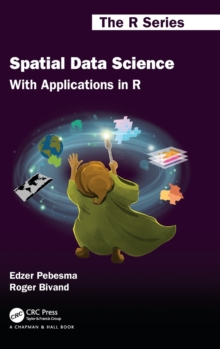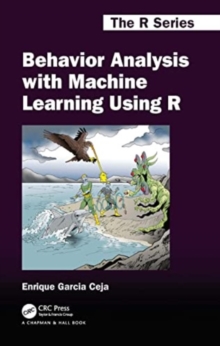
Behavior Analysis with Machine Learning Using R PDF
by Enrique Garcia Ceja
Part of the Chapman & Hall/CRC The R Series series
Description
Behavior Analysis with Machine Learning Using R introduces machine learning and deep learning concepts and algorithms applied to a diverse set of behavior analysis problems. It focuses on the practical aspects of solving such problems based on data collected from sensors or stored in electronic records. The included examples demonstrate how to perform common data analysis tasks such as: data exploration, visualization, preprocessing, data representation, model training and evaluation. All of this, using the R programming language and real-life behavioral data. Even though the examples focus on behavior analysis tasks, the covered underlying concepts and methods can be applied in any other domain. No prior knowledge in machine learning is assumed. Basic experience with R and basic knowledge in statistics and high school level mathematics are beneficial.
Features:
- Build supervised machine learningmodels to predict indoor locations based on WiFi signals, recognize physical activities from smartphone sensors and 3D skeleton data, detect hand gestures from accelerometer signals, and so on.
- Program your own ensemble learningmethods and use Multi-View Stacking to fuse signals from heterogeneous data sources.
- Use unsupervised learningalgorithms to discover criminal behavioral patterns.
- Build deep learningneural networks with TensorFlow and Kerasto classify muscle activity from electromyography signals and Convolutional Neural Networksto detect smiles in images.
- Evaluate the performanceof your models in traditional and multi-usersettings.
- Build anomaly detectionmodels such as Isolation Forests and autoencodersto detect abnormal fish behaviors.
This book is intended for undergraduate/graduate students and researchers from ubiquitous computing, behavioral ecology, psychology, e-health, and other disciplines who want to learn the basics of machine learning and deep learning and for the more experienced individuals who want to apply machine learning to analyze behavioral data.
Information
-
Download - Immediately Available
- Format:PDF
- Pages:434 pages
- Publisher:CRC Press
- Publication Date:25/11/2021
- Category:
- ISBN:9781000484236
Other Formats
- Paperback / softback from £44.75
- Hardback from £84.99
- EPUB from £41.39
Information
-
Download - Immediately Available
- Format:PDF
- Pages:434 pages
- Publisher:CRC Press
- Publication Date:25/11/2021
- Category:
- ISBN:9781000484236










